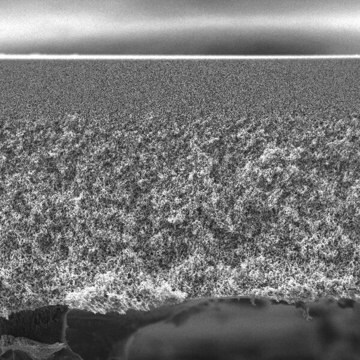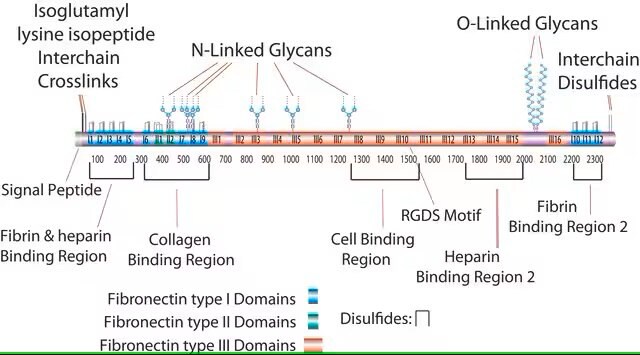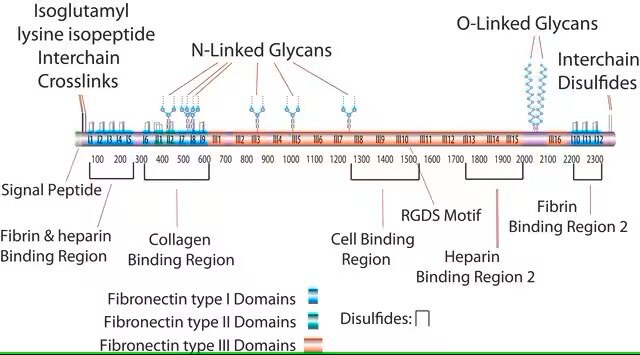F2518
Human Fibronectin
from human foreskin fibroblasts, powder, suitable for cell culture
Synonim(y):
Fibronectin
About This Item
Polecane produkty
Nazwa produktu
Fibronectin human foreskin fibroblasts, lyophilized powder, suitable for cell culture
pochodzenie biologiczne
human foreskin fibroblasts
Poziom jakości
linia produktu
BioReagent
Formularz
lyophilized powder
masa cząsteczkowa
~550 kDa
opakowanie
pkg of 0.5 mg
metody
cell culture | mammalian: suitable
pokrycie powierzchni
1‑5 μg/cm2
zanieczyszczenia
Human Source, none detected (HCV)
Human Source, none detected (HIV)
Human Source, none detected (HTLV)
Human Source, none detected (HbSAg)
Microbial Contamination, passes test
rozpuszczalność
H2O: 1 mg/mL at 37 °C (Store reconstituted solution in working aliquots at -20°C or lower.)
numer dostępu NCBI
numer dostępu UniProt
Specyficzność wiązania
Peptide Source: Collagen
Warunki transportu
ambient
temp. przechowywania
−20°C
informacje o genach
human ... FN1(2335)
Szukasz podobnych produktów? Odwiedź Przewodnik dotyczący porównywania produktów
Opis ogólny
Zastosowanie
Działania biochem./fizjol.
Cechy i korzyści
- Fibronectin is isolated from human foreskin fibroblasts maintained in serum-free medium.
- It can be used as a cell attachment factor for various cell types, including epithelial, mesenchymal, neuronal, neural crest, endothelial cells, and fibroblasts.
- The starting material is tested and found negative for HIV and HBsAg.
- The product is soluble in sterile water, yielding a clear, colorless solution.
- It can be stored at -20°C for at least three years.
Przestroga
Postać fizyczna
Uwaga dotycząca przygotowania
Rekonstytucja
Komentarz do analizy
Kod klasy składowania
11 - Combustible Solids
Klasa zagrożenia wodnego (WGK)
WGK 3
Temperatura zapłonu (°F)
Not applicable
Temperatura zapłonu (°C)
Not applicable
Środki ochrony indywidualnej
Eyeshields, Gloves, type N95 (US)
Wybierz jedną z najnowszych wersji:
Masz już ten produkt?
Dokumenty związane z niedawno zakupionymi produktami zostały zamieszczone w Bibliotece dokumentów.
Klienci oglądali również te produkty
Produkty
Fibronectin (FN) is a multifunctional, extracellular plasma glycoprotein produced by hepatocytes that circulates at near micromolar concentration and assembles into extracellular matrix fibrils at cell surfaces along with locally produced cellular FN.
Fibronektyna (FN) odgrywa kluczową rolę w tworzeniu fibryli macierzy zewnątrzkomórkowej i interakcjach komórkowych.
Białka macierzy zewnątrzkomórkowej, takie jak laminina, kolagen i fibronektyna, mogą być stosowane jako podłoża do mocowania komórek w hodowli komórkowej.
Cancer stem cell media, spheroid plates and cancer stem cell markers to culture and characterize CSC populations.
Protokoły
Rozcieńczona fibronektyna do mocowania komórek, w zależności od typu komórek. Protokół powlekania, produkty i często zadawane pytania.
Dilute fibronectin to the desired concentration. Optimum conditions for attachment are dependent on cell type and application. The typical coating concentration is 1 – 5 ug/cm2.Fibronectin coating protocol, products, and FAQs.
Nasz zespół naukowców ma doświadczenie we wszystkich obszarach badań, w tym w naukach przyrodniczych, materiałoznawstwie, syntezie chemicznej, chromatografii, analityce i wielu innych dziedzinach.
Skontaktuj się z zespołem ds. pomocy technicznej









